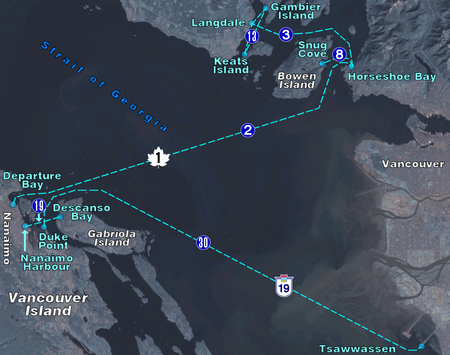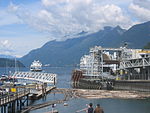Bowen Island Ferry

The Bowen Island ferry travels between Snug Cove on Bowen Island, and Horseshoe Bay in the District of West Vancouver, British Columbia, Canada, a trip of three nautical miles across Queen Charlotte Channel. A scheduled ferry has been in operation since 1921, when Bowen Island was a popular holiday destination. Prior to that year, transportation to the island was by steamship from Vancouver, with only one trip daily. The Bowen Island ferry used a fleet of small passenger vessels until 1956, when a single car ferry began passenger service, and that ferry began carrying vehicles in 1958. In 2022 the route carried in excess of 1.2 million passengers plus 570,000 vehicles.The Bowen Island ferry has no official or common name, and is only numbered as route 8, though this is likely intended more for internal documentation. It is currently run with the use of a single vessel, the Queen of Capilano.
Excerpt from the Wikipedia article Bowen Island Ferry (License: CC BY-SA 3.0, Authors, Images).Bowen Island Ferry
West Vancouver Horseshoe Bay
Geographical coordinates (GPS) Address Nearby Places Show on map
Geographical coordinates (GPS)
| Latitude | Longitude |
|---|---|
| N 49.3846 ° | E -123.3018 ° |
Address
Whytecliff
V7W 2A5 West Vancouver, Horseshoe Bay
British Columbia, Canada
Open on Google Maps






